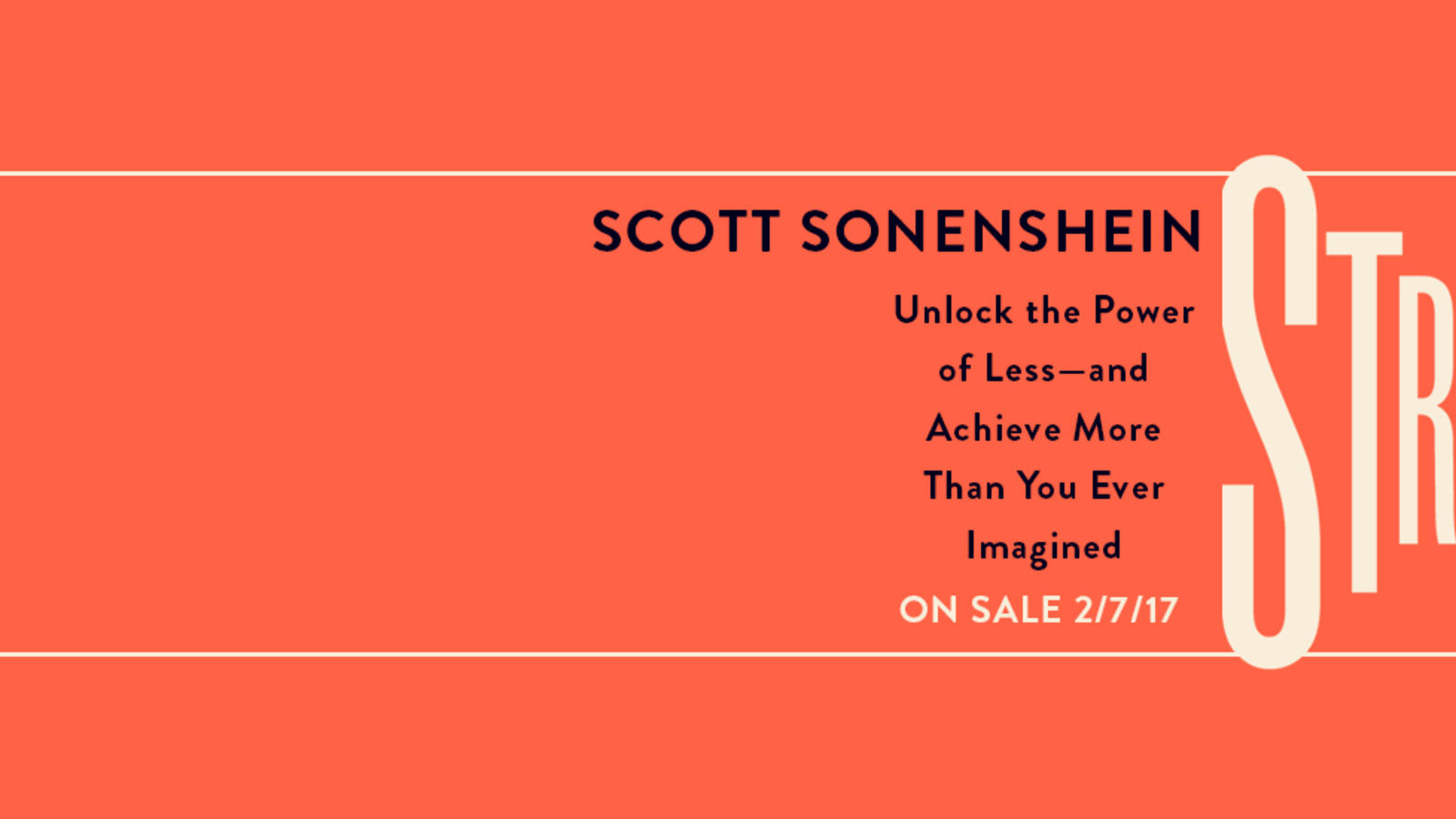
Resourcefulness
An Excerpt From Stretch A Book By Rice Business Professor Scott Sonenshein
By Scott Sonenshein
An Excerpt From Stretch A Book By Rice Business Professor Scott Sonenshein
Copyright © 2017 by Scott Sonenshein. Reprinted courtesy of HarperBusiness, an imprint of HarperCollins Publishers.
In the fall of 1961, a headstrong teenager named Dick left rural Pennsylvania to attend a military high school 150 miles away. Its rigid schedule and strict rules required students to rise early, dress in naval-style uniforms, and salute instructors. It was a far cry from his hometown life, where friends called him “Party Boy”—a fitting nickname for the son of a regional brewery owner who’d begun working in the family’s warehouse stacking cases of beer a few summers back.
When his parents visited a month into the term, Dick begged them to take him home so he could learn about the family business. They refused. With the industry struggling, they hoped their son’s new surroundings would inspire him to pursue a more promising future away from beer.
Dick had other plans. After convincing a maintenance man to give him civilian clothes, he climbed a tree and jumped over a wall to escape the forty-acre campus. He hopped on a bus to Philadelphia before hitchhiking home, unable to stay away from the brewery he loved. His return home with little more than the clothes on his back would foreshadow the resourceful way he would ultimately go on to turn the struggling family enterprise into one of the country’s most successful beer producers, becoming a billionaire at the time his chief rival squandered what could’ve turned into a nine-billion-dollar company.
Started in 1829 as the Eagle Brewery by his German ancestors, the business had outlasted scores of other brewers by the time Dick took over for his ailing father in 1985. The three major players—Anheuser-Busch, Miller, and Stroh—controlled 70 percent of the national beer market. Dick’s brewery put out a modest 137,000 barrels annually, a drop in the bucket of the close to 200 million barrels produced nationwide. Faced with competition from these mega-companies, smaller producers typically took one of two paths. Some gave up as independents and sold themselves to competitors. Others tried to grow rapidly through acquisitions.
Dick rejected both options. He wouldn’t sell, and he wouldn’t buy. Instead, he’d find better ways to work with what he had to build a prosperous business he’d enjoy running.
Although big marketing dollars typically drove beer sales, Dick found ways to get more out of his modest advertising budget. He built awareness by tapping into his company’s rich but underutilized history. America’s oldest brewery had a type of appeal that separated its products from the three major producers.
Instead of entering as many markets as possible, Dick limited sales to only a handful of regions, creating a sense of scarcity that drove more demand. A cult-like group of fans would cross state borders to buy the hard-to-get beer, lending a mystique to the brand. Several enthusiasts became the beer’s best, and free, advertisers, and even started campaigns to appeal to the company to come to their part of the country. As his business grew, Dick purchased used tanks, bottlers, and labelers—giving them a second life.
By 1996, Dick’s efforts to get the most out of his 150-plus-year-old factory were so successful that the five hundred thousand barrels the company brewed finally maxed out the facility, which had been built to produce only about half as much.
Before investing in another plant, he consulted with his most important partners—his four daughters. With only three percent of family businesses making it to the fourth generation or beyond, he wanted to gauge their passion for becoming sixth generation owners. Only after they enthusiastically expressed interest did Dick see a purpose in continuing to grow the business.
Dick’s company, D. G. Yuengling & Son, grew into America’s largest domestically owned beer producer. But that was never his goal. “We were not in any race to be the largest domestically-owned brewer,” he reflects. “Our game is longevity . . . My daughters . . . are in the business now and we want their kids to be able to run it some day. That’s what’s satisfying to us.”
Forbes estimates the blue jeans- and sneaker-wearing leader of the beer giant has a net worth of close to $2 billion. Even with all of his wealth, he still drives a modest car and regularly turns off lights left on at the office. “They say I’m cheap,” he told me, “but I’m economical.”
His motto—to work with what he has and make the most out of it—helped him achieve the elusive goal of creating a thriving and sustainable business he enjoys running alongside his children.
What made Dick so successful and satisfied when so many other breweries went bust, running themselves and their companies into the ground?
As a social scientist and Rice University professor, I’ve spent over a decade studying what makes organizations more prosperous and the people who work inside them better off. I’ve researched, consulted with, or worked at organizations in industries as diverse as technology, manufacturing, banking, retail, energy, health care, and nonprofits, spending time with top executives at Fortune 500 companies, entrepreneurs launching their businesses, front-line employees trying to make a difference, and everyone in between.
What I’ve found in my research, and what a growing body of scientific evidence supports, is that how we think about and use resources has a tremendous influence on professional success, personal satisfaction, and organizational performance. We routinely overestimate the importance of acquiring resources but even more significantly underestimate our ability to make more out of those we have.
Whether adapting to major changes, going about everyday routines, or trying to carve out meaningful careers and lives, my research explains how people and organizations can expand their resources to achieve great things and feel fulfilled—to stretch. Stretching is a learned set of attitudes and skills that comes from a simple but powerful shift from wanting more resources to embracing and acting on the possibilities of our resources already in hand.
Scott Sonenshein is the Henry Gardiner Symonds Professor of Management at Jones Graduate School of Business at Rice University.
Never Miss A Story


